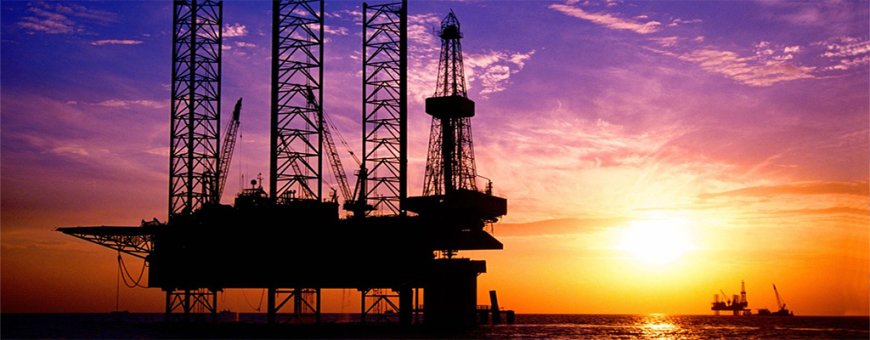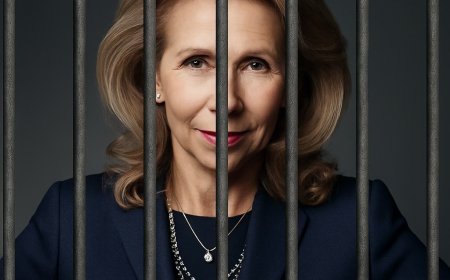The Oil Boom No One Wants to Talk About

Amid heated debates about how quickly and at what cost the world could reach net-zero emissions during constant geopolitical shifts and market turbulence, several oil-producing nations are doubling down on oil and their role in global crude supply.
From the Middle East to Africa, South America, and even Europe, these are seven large or aspiring producers who are looking to boost their production in the coming years, with some also working on raising their oil production capacities.
The UAE
The United Arab Emirates (UAE), one of OPEC’s top producers, is currently raising its oil production capacity.
ADNOC, the Abu Dhabi national oil company, aims to increase its production capacity to 5 million barrels per day (bpd) by 2027, up from 4 million bpd a few years ago. Currently, capacity is about 4.8 million bpd.
Just last week, the UAE’s Energy Minister, Suhail Al Mazrouei, hinted that capacity could rise beyond 5 million bpd after 2027, if needed.
“We can go to 6 million if the market requires,” Al Mazrouei told Reuters on the sidelines of the OPEC annual seminar in Vienna.
The minister noted, however, that such an additional increase is not an official target, unlike the goal of 5 million bpd by 2027.
The increase in production capacity allows the UAE to seek a higher output quota in the OPEC and OPEC+ agreements. For example, the UAE last year argued for and received a higher quota for 2025 and 2026 due to the ramp-up of its production capacity.
Iraq
Another major producer, Iraq, is also planning on increasing its production capacity. OPEC’s second-largest producer seeks to boost capacity to more than 6 million bpd by 2029, and potentially produce 7 million bpd within the next five years.
Iraq’s current production is about 4 million bpd, as it is trying to compensate for previous overproduction in the OPEC+ agreements.
Iraq is arguably the Gulf oil producer most dependent on oil revenues. Despite efforts to diversify its economy, it is doubling down on its most precious resource—enormous crude oil reserves estimated to be the world’s fourth largest.
Saudi Arabia
Speaking of large, OPEC’s biggest producer and the world’s top crude oil exporter, Saudi Arabia, is also betting big on oil. Crude oil is the pillar of the Kingdom’s revenues for the plan to diversify the economy and the key income for the budget.
Last year, Saudi Aramco said it was ordered by the Kingdom’s leadership to stop work on expanding its maximum sustainable capacity to 13 million bpd, instead keeping it at 12 million bpd.
Still, the Saudis remain the most influential force in OPEC and OPEC+.
Even as Saudi Arabia is tendering a massive 44 gigawatts (GW) capacity of renewable energy projects, it will maintain its oil-producing potential to ensure global energy security, officials from the Kingdom said in October.
While the world is moving towards an energy transition, all forms of energy will be absolutely needed to ensure global energy security, said Saudi Arabia’s Energy Minister, Prince Abdulaziz Bin Salman.
“We are committed to maintaining 12.3 million of crude capacity and we are proud of that,” the minister said.
Saudi Aramco’s President and CEO, Amin Nasser, last month said that “Reality has revealed a transition plan that’s been oversold and under-delivered for large parts of the world, especially Asia.”
The world needs to accept that “transition will not be smooth sailing or pain-free, especially in an increasingly volatile and uncertain world,” Nasser said.
Brazil
On the other side of the world, and out of any OPEC+ deals, South America’s biggest oil producer and one of the world’s top ten, Brazil, is raising its output and exploring for more oil, even in sensitive areas offshore the Amazon.
Brazil is auctioning off, quite successfully, offshore areas in the pre-salt layer and the Foz do Amazonas basin, which is part of the Equatorial Basin. Big Oil flocked to a recent tender held in June. Meanwhile, state-held energy giant Petrobras is spending billions of U.S. dollars to boost oil and gas exploration and production. Petrobras’s investment plan for the five years to 2029 stands at $111 billion. Of this, $77 billion is earmarked for oil and gas exploration and production activities.
Guyana
Brazil’s neighbor to the northeast, Guyana, is the world’s newest petrostate.
Oil production and exports, which began in 2019, have led to a booming economy, which has been showing double-digit growth over the past few years.
Guyana already produces more than 660,000 bpd of crude from the Exxon-operated Stabroek block.
Production capacity in Guyana is expected to top 1.7 million barrels per day, with gross production growing to 1.3 million barrels per day by 2030, Exxon says. Guyana is now the third-largest per-capita oil producer in the world, according to the U.S. supermajor.
Surging oil production and exports helped Guyana’s economy grow by 43.6% last year, marking the fifth straight year of double-digit GDP growth, which began just as Guyana became an oil producer.
Namibia
In West Africa, there’s a wannabe oil producer which has been dubbed “the new Guyana” amid expectations that Namibia’s oil resources could be similar to the huge volumes found offshore Guyana.
Despite the net-zero goals of many countries that would be potential buyers of Namibia’s oil, the country wants to become an oil producer and possibly replicate Guyana’s success.
As one of the latest exploration hotspots in the world, Namibia is weighing further incentives and financing options to offer to international majors preparing plans for oil production offshore the African country.
Oil and gas supermajors, including Shell, TotalEnergies, and Portugal-based energy firm Galp, have already made significant discoveries offshore Namibia.
However, without infrastructure in place, costs are higher for production development plans.
That’s why Namibia wants to help the supermajors with further incentives to have them reach final investment decisions on oil production projects.
In May, a senior official said that Namibia expects TotalEnergies and Norway’s BW Energy to take final investment decisions on oil projects in late 2026.
Norway
Last but not least, an honorable mention goes to Norway, Western Europe’s biggest oil and gas producer, where electric vehicle (EV) sales have a market share of a whopping 97%.
Despite a predominantly EV car fleet and a 97% renewable electricity production dominated by hydropower, Norway wants to sustain high oil and gas output at least until 2035, to help meet European demand.
Unlike most governments in Europe, Norway’s successive governments have for decades strongly supported the oil and gas industry, which yields huge income for the budget and for the sovereign wealth fund, the world’s largest such fund with assets worth about $1.92 trillion as of this week.
Norwegian energy major Equinor, partly owned by the state, continues to approve major capacity expansions and drills for new discoveries to “maintain a high level of oil and gas production on the shelf towards 2035.
Further exploration efforts and new discoveries would be crucial to slowing the expected decline in Norway’s oil and gas production in the 2030s, the Norwegian authorities have said in recent years.
By Tsvetana Paraskova for Oilprice.com









































